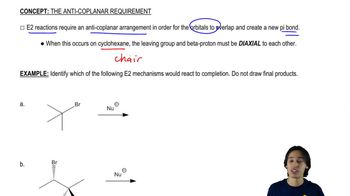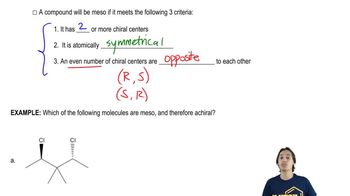For each reaction, decide whether substitution or elimination (or both) is possible, and predict the products you expect. Label the major products.
c. chlorocyclohexane+NaOCH3 in CH3OH
d. chlorocyclohexane + NaOC(CH3)3 in (CH3)3COH
 Verified step by step guidance
Verified step by step guidance Verified video answer for a similar problem:
Verified video answer for a similar problem:



 2:27m
2:27mMaster Overview of the flowchart. with a bite sized video explanation from Johnny
Start learning